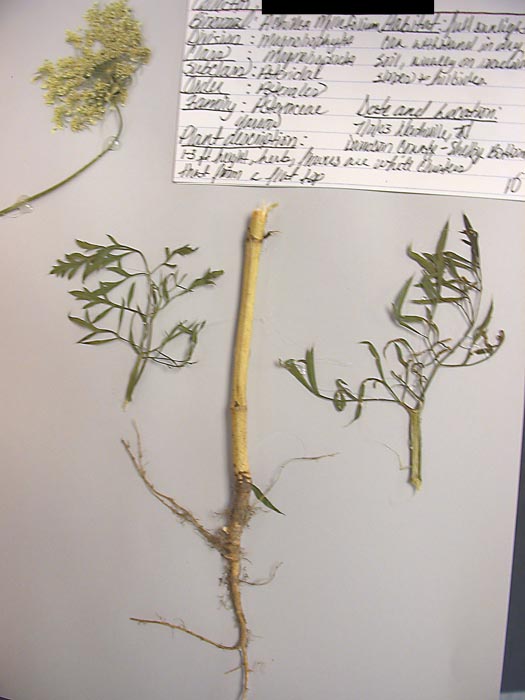
This is a good example of a large herb
mounting. The herb was too large to fit onto the page, and even folding the
stem was not sufficient as it would have taken several folds. Notice that
the flower is present, more than one leaf is present, the base of the stem
is present, and a small piece of stem with leaves attached is present.
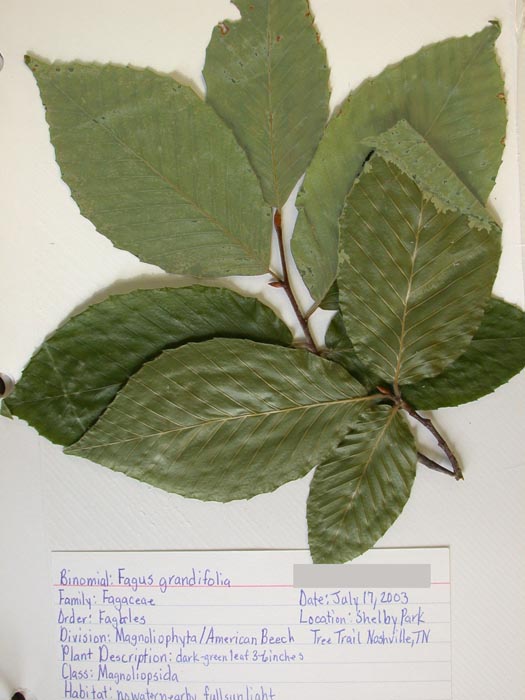
This tree mounting is not great but will
suffice. What I see is that leaves are attached to the branch, so that their
attachment can be seen, and that both the upper and lower surfaces are visible.

This forb (herb) has some problems, but
has some good points, too. The lower portion of the plant is missing. However,
the flowers and leaves are well done.
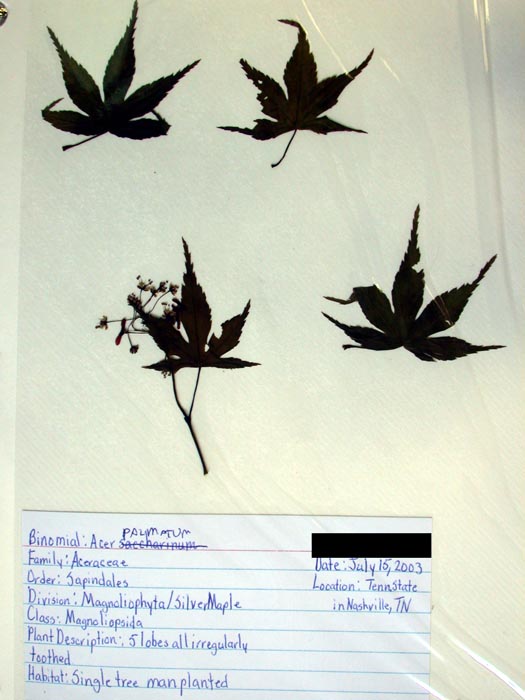
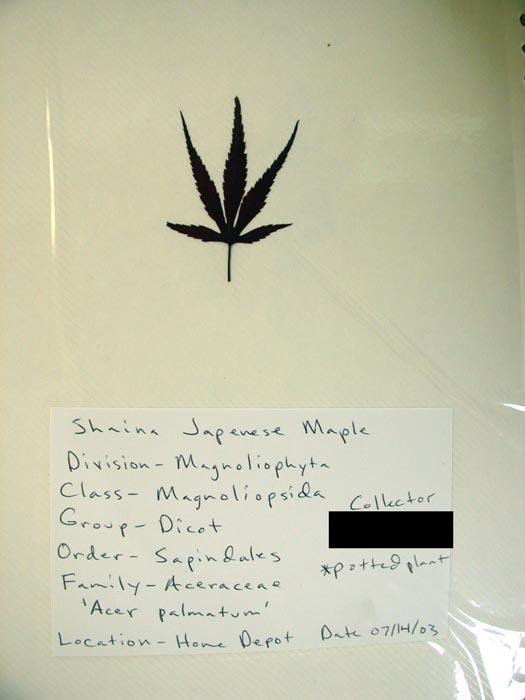
Here are two trees, one with more information
than the other. First, the specimen on the right is not quite a single leaf.
The bottom of the leaf petiole (stalk) is cut off. The only good part of the
specimen on the left is in the lower left corner. That is a leaf attached
to a branch with the fruiting body. Lots of information. What is lacking is
a couple more leaves, so that their branching pattern is evident.
Terrible. Rotting due to incomplete preservation.
Identified by the label. Boo.
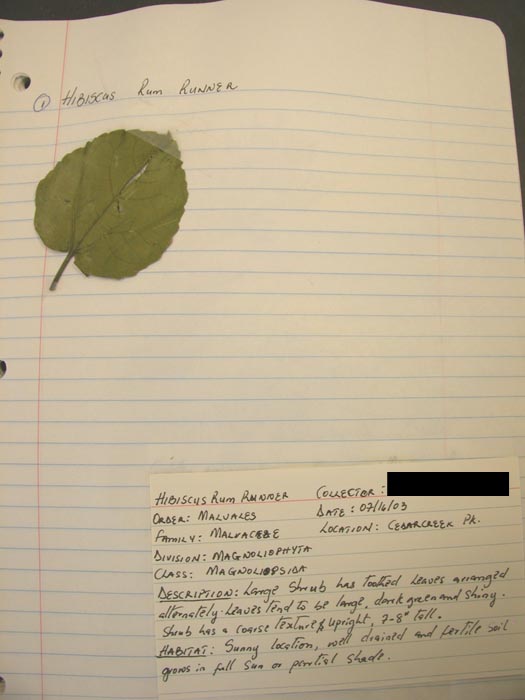
A single leaf on a notebook page? No
credit.
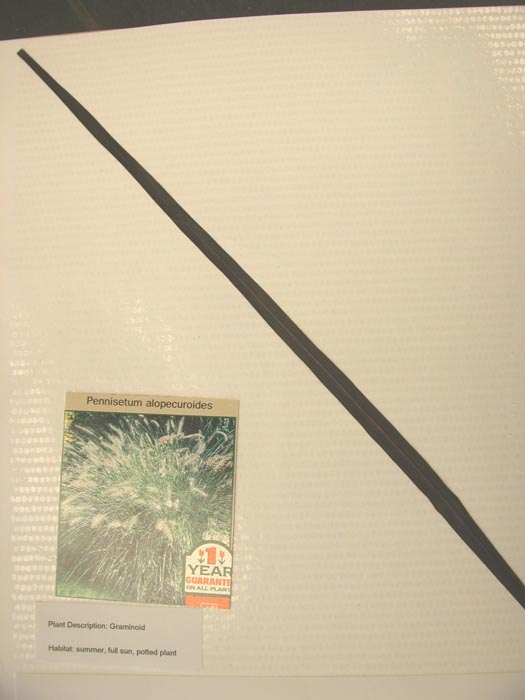
Same problem as above. No credit

Two different identifications on the
same page? Not good. Each a single leaf with no branch, no flower, no fruit,
no bark. No good.
I haven't the
pictures to do it all, but I have some that illustrate important morphological
points.
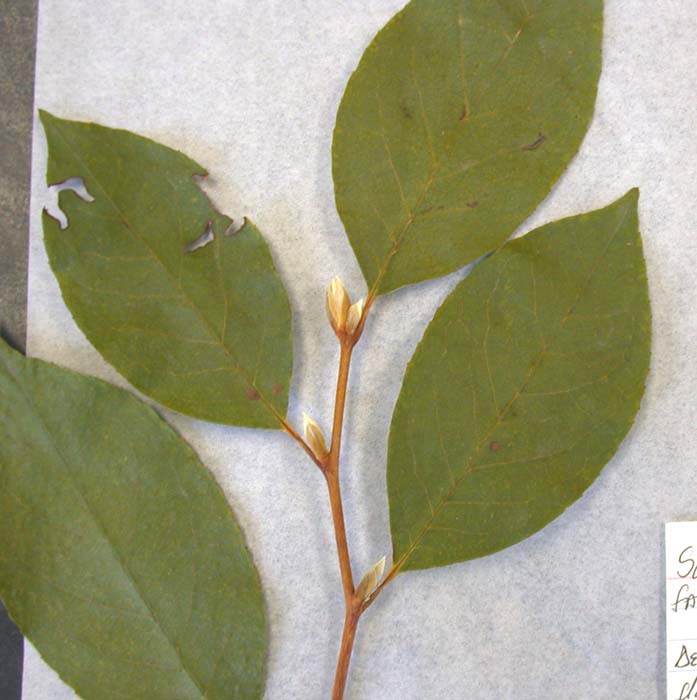 .
.
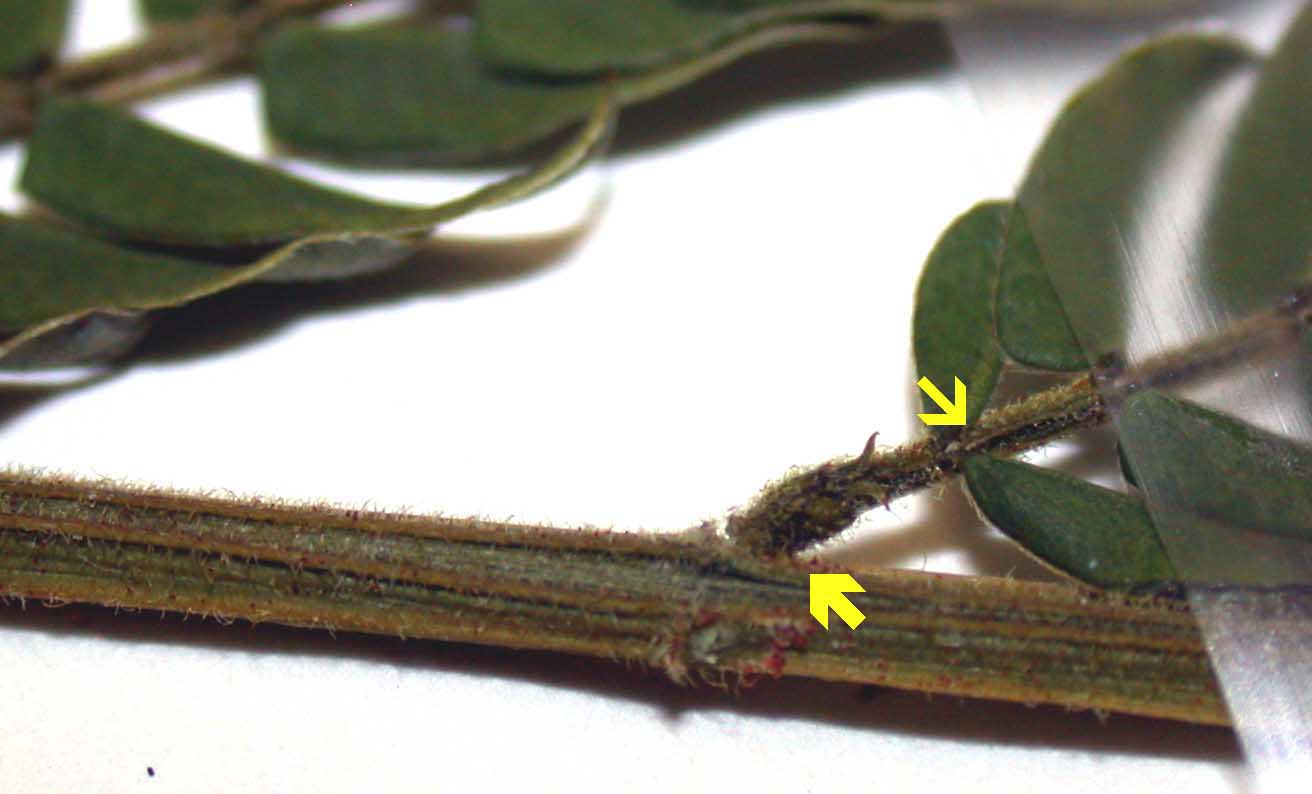
These two pictures compare
a branch with several leaves to a close-up of a compound leaf that looks
like a branch. On the left is a branch. You can see prominent axillary buds
where the leaf petioles meet the stem. On the right, the arrows point to
where buds might be, but they are missing, so this is a doubly compound
leaf. The thick stalk is the leaf petiole, and a secondary stalk splits
off. The leaflets are attached to the secondary stalk.






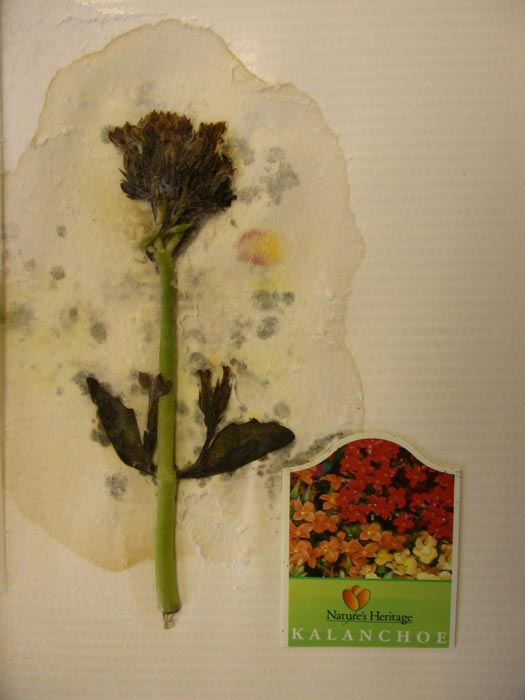



 .
.
